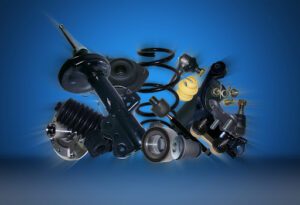The suspension and steering systems of a vehicle are crucial components that work hand in hand to ensure a safe and comfortable ride. These systems must be properly maintained to ensure optimal performance and safety. In this article, we will dive deep into the intricacies of suspension and steering systems, their components, types, and benefits. We will also look at the maintenance requirements for these systems to help drivers better maintain their vehicles.
Suspension and steering systems are essential parts of a vehicle that provide support and stability to the frame and body. The suspension system is responsible for absorbing shocks from road hazards, while the steering system enables the driver to control the direction of the vehicle. The optimal performance of these systems can offer several benefits, including improved safety, enhanced comfort, and better handling. It is essential to know more about suspension and steering, whether you are a seasoned professional or a novice.
There are two main types of suspension systems found in modern vehicles
independent and dependent suspensions. Independent suspensions provide better handling at higher speeds, while dependent suspensions offer superior stability but less manoeuvrability. The components of a suspension system include shock absorbers/struts, coil springs (or torsion bars), leaf springs (or airbags), bushings/ball joints/control arms/knuckles, stabilizer bars (anti-roll bars), sway bar links, tie rod ends/track rods, wheel bearings/hub assemblies (for four-wheel drive).
An optimal suspension system can improve the safety of your vehicle by efficiently absorbing the impact from potholes or other road hazards. It can also help reduce the chance of getting into an accident due to poor handling caused by worn-out parts or improper alignment. Additionally, a properly functioning steering system allows for precise control over the direction of your vehicle, which helps you maintain control even when driving on slippery roads or in windy conditions. Moreover, an optimal suspension and steering system provides enhanced comfort while driving by reducing vibrations from rough terrain and providing smoother turning capabilities, resulting in less driver fatigue during long trips.
Regular maintenance of the suspension and steering systems is essential for keeping your car running smoothly. Regular inspection of all parts of the suspension system is necessary to maintain its performance. Signs of wear, such as rust on metal parts or cracks in rubber bushings, should be checked and replaced immediately. Additionally, wheel alignment should be checked once a year to ensure that the wheels are pointing straight ahead when driving straight down the road without veering off course to either side.
The steering system is responsible for controlling where you want your car to go by turning the wheels left or right when using the steering wheel. Regular inspection of components such as rack-and-pinion gears, power steering pumps, and hoses is essential for maintaining the performance of the steering system. Signs of wear and damage should be checked and replaced immediately.

Conclusion:
Suspension and steering systems are critical components of a vehicle that work together to provide a safe and comfortable ride. The optimal performance of these systems is necessary for maintaining a smooth ride, maximizing fuel economy, and proper handling.
Regular inspection and maintenance of these systems are essential to ensure their optimal performance and safety. By understanding how these systems work together, drivers can better maintain their vehicles and stay safe on the road.
